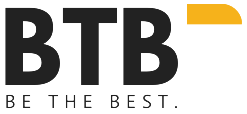
Valuation Structure – The Magical Potion of Fusion Cloud Costing
With the advent of Oracle Fusion Costing, several new terminologies are being thrown around which, Oracle EBS Costing practitioners are trying to get their heads around. To name a few – Cost Books, Cost Organizations, Cost Profile, Valuation Structures, Valuation Units etc. Among all, Valuation Structures does stand out and which is what drives the magic in Fusion Cloud Costing. Let us delve into this and see if it is truly the magic Oracle EBS Costing practitioners were looking for?
Let’s take a Use Case of Farm Enterprise. Farm Enterprise buys and sells fruits – Oranges, Mangoes & Apples. Farm Enterprise is based out of North America with their HQ in San Antonio, Texas. They have many farms, which they have designated as inventory orgs (Farm A, Farm B & Farm C) in their Fusion environment. Let us see some of the ways they are utilizing valuation structures to drive their costing needs.
- Enterprise
- Farm Enterprise
- Inventory Organizations
- Farm A
- Farm B
- Farm C
- Costing organization
- Farm Cost Org
- Farm Cost Org
- Farm Cost Org
Since Farm Enterprise buys and sells several grades of fruits, they have different levels of fruits classification. They made a business decision to create a cost category for each grade to drive their costing process. Furthermore, here are some of rules business follows for Oranges:
- Rules for Oranges
- Excellent Grade has the same supplier and follows the Global Purchase Agreement and hence will Average cost PO Receipts across all inventory orgs. Regardless of which org – Farm A, Farm B or Farm C receives the PO, item costs must be driven off by averaging all POs in all orgs.
- Prime Grade is volatile in costing nature, it has different procurement sources and procurement costs changes from time to time, and so they need to have Actual Cost specific to individual inventory orgs.
- Good Grade has no consistent costing characteristics, it has 3 items under this costing category. Each follows its own costing path:
- Orange Good1 (Item Specific Cost Profile – Actual)
- Orange Good2 (Item Specific Cost Profile – Perpetual Average)
- Orange Good3 (Item Specific Cost Profile – Standard)
| Fruit | Fruit Grades (Cost Category) | Item | Cost Method | Valuation Structure |
| Oranges | Excellent | Perpetual Average | Cost Org | |
| Prime | Actual | Cost Org-Inventory Org | ||
| Good | ||||
| Orange Good1 (Item Cost Profile) | Actual | Cost Org-Inventory Org | ||
| Orange Good2 (Item Cost Profile) | Perpetual Average | Cost Org-Inventory Org | ||
| Orange Good3 (Item Cost Profile) | Standard | Cost Org-Inventory Org |
Wow! So many ways an Orange can be costed in Fusion Cloud?
Well the reality is different Costing Methods always existed in Oracle EBS Costing applications, however, there never was so much flexibility to drive item costs. As the example above illustrates, Farm Enterprise has all the costing tools at its disposal to cost any item, anyway they like. Bottom line, it is the introduction of the “Valuation Structure” concept the magic potion that empowers Fusion Costing
Some might say, Fusion Costing has finally given costing practitioners the “Costing freedom” they were all along looking for!





